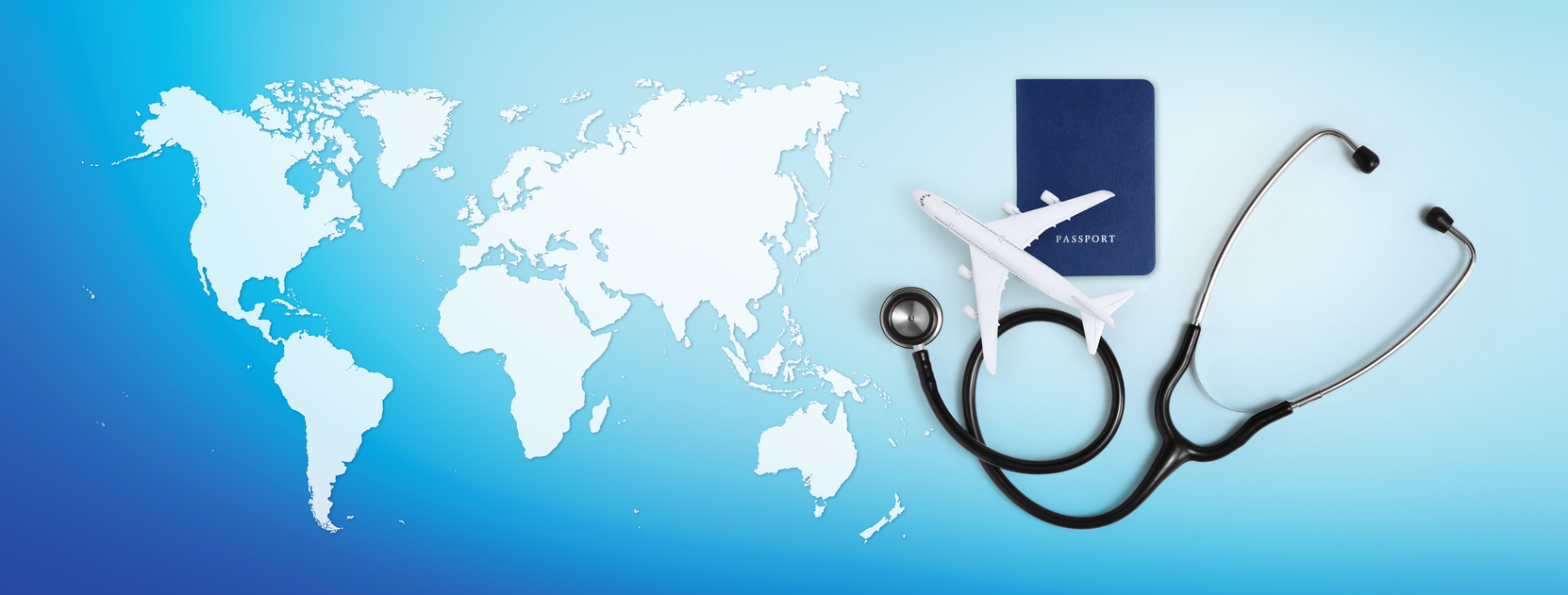Whether it’s for work, school, or volunteer assignment – people inevitably travel to places off the beaten path, and with that, comes a certain degree of risk – particularly when traveling to destinations with limited resources.
This article from our Chief Medical Officer, Dr. Michelle Nathan, is aimed at sharing insights with organizations on how they can play a pivotal role in protecting the health and safety of your travelers through education and awareness of the global travel risk landscape. Specifically, Dr. Nathan discusses how pre-trip planning, knowledge of the destination and its resources, and a robust plan for emergencies can help protect and support your travelers regardless of where their travels take them.
 A pre-trip evaluation should start with assessing the traveler’s general health and medical conditions. A comprehensive medical history and examination, and description of expected duties and all intended locations allow for individual risk assessment. Ideally, a professional who is well-versed in travel medicine and familiar with the destination should complete the examination. This allows for disease-specific counseling and the opportunity to understand the health risks of each unique assignment. Routine dental care with necessary repairs should also take place prior to travel.
A pre-trip evaluation should start with assessing the traveler’s general health and medical conditions. A comprehensive medical history and examination, and description of expected duties and all intended locations allow for individual risk assessment. Ideally, a professional who is well-versed in travel medicine and familiar with the destination should complete the examination. This allows for disease-specific counseling and the opportunity to understand the health risks of each unique assignment. Routine dental care with necessary repairs should also take place prior to travel.
Vaccinations, chemoprophylaxis, and disease prevention measures are vital to pre-trip planning and should be routine for long-term workers. In addition to destination-specific vaccines, routine childhood vaccinations may require updates before travel. Chemoprophylaxis, particularly for malaria, will be recommended for travel to endemic areas. Disease prevention measures can include insect precautions, food and water precautions, and avoidance of environmental hazards.
Those who plan to stay in destinations for longer periods should consider bringing supplies for common ailments and learning basic first aid and CPR. A travel health kit can be customized for each destination and carried by the traveler. The most common health problems for overseas workers are traveler’s diarrhea, injuries, skin issues, and dental issues. In areas with significantly limited resources, consideration can be given to supplying travelers with antibiotics and guidelines for the treatment of traveler’s diarrhea. The travel kit can contain basic first aid supplies, topical medications, and oral medications to bridge the gap until medical care can be obtained.
Developing Important Local Connections
Ideally, organizations will have existing connections with community leaders and local health authorities who know local medical practices, facilities, and availability of medical supplies. These relationships provide insights into local customs and resources for medical illnesses. Some communities may have health workers that provide basic healthcare and know the area resources for higher levels of medical care. Collaborating with these leaders can help facilitate minor medical care and help overcome any potential cultural and language barriers that can affect care. Travelers should be aware (and accepting of) local medical conventions and understand that care may be delivered differently than they may be used to at home.
Planning for Emergencies
All organizations should have a contingency plan for the medical care of a significant illness or injury. While utilizing local staff and knowledge is preferred, telemedicine can be an option in extreme cases where local or regional resources are scarce. It allows for remote consultations, medical evaluation, and access to information otherwise unavailable. In conjunction with workers’ supplies, telemedicine can manage minor illnesses and injuries, and may alert the worker to the need for further medical treatment.
Travelers in remote locations often require carefully planned medical evacuation for appropriate care. Collaboration and coordination are crucial in arranging medical evacuations. Many organizations utilize external travel risk management firms and/or transport companies to facilitate the arrangement of medical evacuations. These companies can assess the patient’s medical needs during transportation, choose a destination based on the patient’s medical condition, provide medical equipment and supplies necessary for transport, choose a mode of transportation, and manage logistics and planning.
Conclusion
The health and welfare of travelers in destinations with limited resources is an important matter for organizations. Steps can be taken to mitigate the medical concerns that arise with this type of travel. A thorough pre-trip evaluation, including a general health assessment and destination-appropriate vaccinations, provide many risk management measures for anticipated health conditions. Basic medical supplies and individual training can provide a cushion for basic care. Collaboration with destination local leaders facilitates access to care when needed during travel. A well-planned contingency plan offers a safety blanket in the event of significant illness or injury. Together, these elements result in a safer, improved health environment for workers in more remote regions.
About On Call International
When traveling, every problem is unique–a medical crisis, a political threat, even a common mishap such as a missed flight. But every solution starts with customized care that ensures travelers are safe and protected. That’s why for over 25 years, On Call International has provided fully-customized travel risk management and global emergency assistance services protecting millions of travelers, their families, and their organizations.


